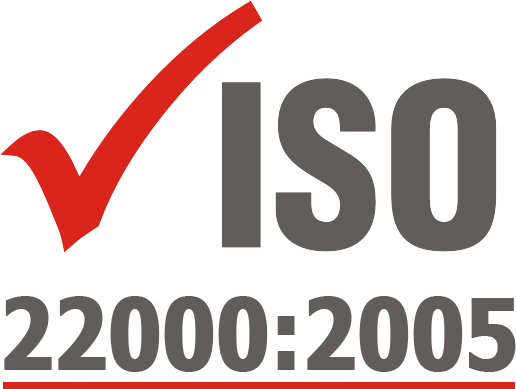- PO Box 2219 1934 Geneva 5 AP Switzerland
- info@safaccredited.org
ISO 22000:2005

ISO 22000 is developed by International Organization for Standardization to deal with the food safety. With increasing demand for processed food and other food products, there is a need for an internationally recognized standard to ensure food safety. Food safety is linked to the food borne hazards present at the point of consumption. the food safety management standard, ISO 22000, provides a common standard that enables organisations to demonstrate their commitment to food safety. It is essential to implement adequate controls so that these hazards can be identified at any stage in the food supply chain. a major resulting benefit is that ISO 22000 will make it easier for organisations worldwide to implement the Codex HACCP (Hazard Analysis and Critical Control Point) system for food hygiene in a harmonized way, which does not vary with the country or food product concerned.
ISO 22000 is therefore designed to allow all types of organisation within the food chain to implement a food safety management system. These range from feed producers, primary producers, food manufacturers, transport and storage operators and subcontractors to retail and food service outlets, together with related organisations such as producers of equipment, packaging material, cleaning agents, additives and ingredients.
What is the standard about?
ISO 22000 specifies requirements for a food safety management system in the food chain where an organisation:
- needs to demonstrate its ability to control food safety hazards in order to consistently provide safe end products that meet both customer and food safety regulatory requirements
- aims to enhance customer satisfaction through the control of food safety hazards
The benefits of ISO 22000 Food Safety?
- Demonstrate an organisation’s commitment to food safety.
- Ensure control, at all stages of the food supply chain, are in place to prevent food safety hazards.
- Embed and improve the internal processes needed to provide consistently safe food.
- Provide a framework for management commitment, supplier and customer communication and continuous improvement of the food safety system.
- Provide confidence to customers and other stakeholders that you have the ability to control food safety hazards and provide safe products.
- Provide a means of continual improvement that ensures the food safety management system is reviewed and updated, so that all activities related to food safety remain safe and effective
